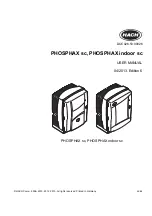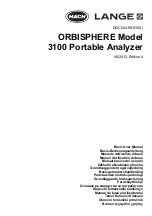
®
Wireless Load Cell ±50N
PS
-
3216
6
013-15734A
clamp the fixture at the edge of a table and hang a mass
from the sensor as shown.
Note that the hanging mass applies tension to the LOAD
side of the Wireless Load Cell; therefore the known force
that you enter into the software should be a negative
value. For example, if the mass is 0.5 kg, the applied
force is -4.9 N.
Direction of Acceleration Sensitivity
The acceleration sensing units inside the sensor are
oriented so that the lines of greatest sensitivity follow the
three X-Y-Z arrows indicating the direction of
acceleration. Note that the software calculates the mag
-
nitude of the resultant acceleration based on the X-Y-Z
values.
X-Y-Z Orientation
In this orientation of the sensor, the X-axis direction is
‘horizontal’, the Y-axis direction is ‘vertical’ and, and the
Z-axis direction is ‘perpendicular’ to the label on the front
of the sensor.
Note that a compression force (LOAD side pushed
toward FIXED side) is considered positive and a tension
force (LOAD side is pulled away from FIXED side) is
considered negative in direction.
Test the Sensor’s Output Using Earth’s Gravity
Start the PASCO Data Collection Software. If the Wire
-
less Load Cell is arranged so that the X-axis on the top
of the sensor is vertical and the LOAD side of the Wire
-
less Load Cell is at the top, the Acceleration X-axis
reading is 9.8 m/s². If the sensor is turned so the X-axis
is vertical but the LOAD side is at the bottom, the
Acceleration X-axis reading is -9.8 m/s².
2
2
2
R
X
Y
Z
Arrows indicate direction of acceleration
Z
X
Y
9.8 m/s²
-9.8 m/s²






























